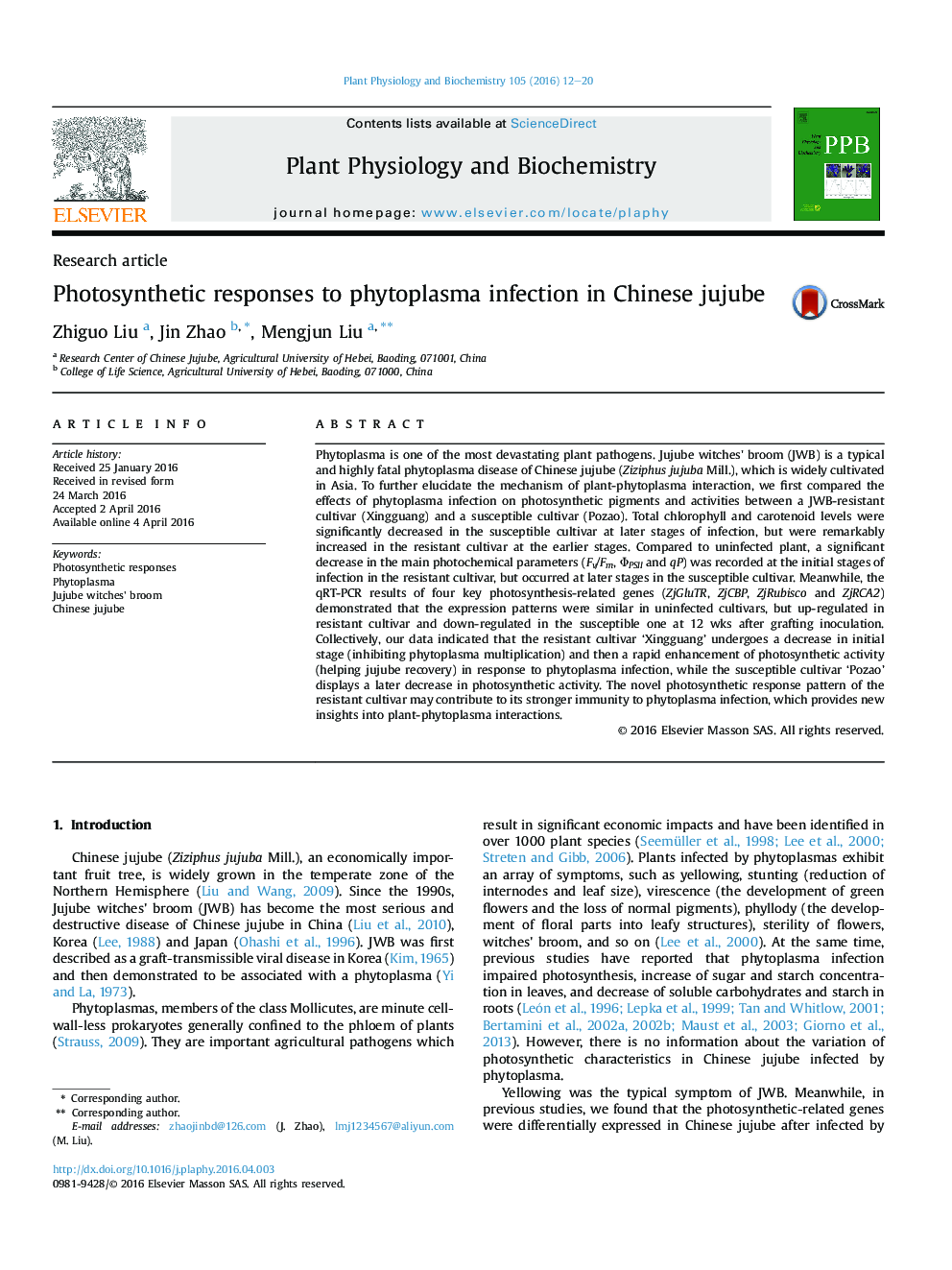| Article ID | Journal | Published Year | Pages | File Type |
|---|---|---|---|---|
| 2015516 | Plant Physiology and Biochemistry | 2016 | 9 Pages |
Abstract
Phytoplasma is one of the most devastating plant pathogens. Jujube witches' broom (JWB) is a typical and highly fatal phytoplasma disease of Chinese jujube (Ziziphus jujuba Mill.), which is widely cultivated in Asia. To further elucidate the mechanism of plant-phytoplasma interaction, we first compared the effects of phytoplasma infection on photosynthetic pigments and activities between a JWB-resistant cultivar (Xingguang) and a susceptible cultivar (Pozao). Total chlorophyll and carotenoid levels were significantly decreased in the susceptible cultivar at later stages of infection, but were remarkably increased in the resistant cultivar at the earlier stages. Compared to uninfected plant, a significant decrease in the main photochemical parameters (Fv/Fm, ΦPSII and qP) was recorded at the initial stages of infection in the resistant cultivar, but occurred at later stages in the susceptible cultivar. Meanwhile, the qRT-PCR results of four key photosynthesis-related genes (ZjGluTR, ZjCBP, ZjRubisco and ZjRCA2) demonstrated that the expression patterns were similar in uninfected cultivars, but up-regulated in resistant cultivar and down-regulated in the susceptible one at 12 wks after grafting inoculation. Collectively, our data indicated that the resistant cultivar 'Xingguang' undergoes a decrease in initial stage (inhibiting phytoplasma multiplication) and then a rapid enhancement of photosynthetic activity (helping jujube recovery) in response to phytoplasma infection, while the susceptible cultivar 'Pozao' displays a later decrease in photosynthetic activity. The novel photosynthetic response pattern of the resistant cultivar may contribute to its stronger immunity to phytoplasma infection, which provides new insights into plant-phytoplasma interactions.
Keywords
Related Topics
Life Sciences
Agricultural and Biological Sciences
Plant Science
Authors
Zhiguo Liu, Jin Zhao, Mengjun Liu,
